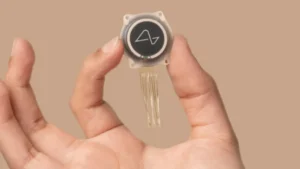Neuralink: The Future of Brain-Computer Connection
In the fast-paced world of today, technology is developing at a mind-boggling pace. One of the most thrilling breakthroughs is taking place at a firm called Neuralink, started by Elon Musk, the same visionary who created Tesla and SpaceX. But what is Neuralink, and how might it revolutionize our lives?
What is Neuralink?
Neuralink is a company that’s working on a technology that connects the human brain directly to computers. Imagine being able to control devices like a computer or even a robot just by thinking about it. That’s the goal of Neuralink — to create a brain-computer interface, or BCI for short.
This technology could help people with brain injuries, like those who are paralyzed, regain control of their bodies. It could also help treat conditions like Alzheimer’s and Parkinson’s, which affect the brain. But the ultimate dream of Neuralink isn’t just to fix health problems — it’s to enhance human abilities.
How Does Neuralink Work?

Neuralink is working on creating tiny, flexible electrodes that can be implanted into the brain. These electrodes are designed to pick up and send electrical signals between the brain and computers. Think of it like a high-tech translator that helps the brain communicate with machines.
In 2020, Neuralink showed off a demonstration where a pig had the device implanted in its brain, and they could monitor its brain activity in real-time. In 2021, the company took things a step further and showed a monkey playing a video game using only its mind, thanks to Neuralink’s technology. 
Why is Neuralink Important?
Neuralink could make a huge difference in healthcare. For example, people with spinal cord injuries who can’t move their bodies may one day be able to regain movement with the help of brain implants. It could also help people with memory loss or those suffering from mental health conditions like depression and anxiety.
But the potential goes beyond just fixing problems. Imagine being able to enhance your brain power. With Neuralink, it might one day be possible to learn new skills, recall information, or even communicate without speaking, just by thinking. That could change how we work, learn, and live.
The Challenges and Concerns
While Neuralink is full of promise, there are also big challenges. The technology is still in its early stages. The implants need to be safe, long-lasting, and effective in the human brain. There are also ethical questions — for example, if this technology becomes available, will everyone have access to it? Could it be misused, or even hacked? There’s also the issue of privacy, as the technology would be able to access some of our most personal thoughts.
Additionally, there have been concerns about animal testing. Neuralink has tested its devices on animals, and some have died as a result. This has sparked debates about the ethics of using animals in research.
What’s Next for Neuralink?
The future of Neuralink is promising but unknown. In the coming years, we might witness more medical advances, where individuals suffering from neurological disorders can avail themselves of this technology. It may also bring about new means of augmenting human capabilities, whether it’s enhancing memory or enabling us to directly communicate with computers and AI.
But there is still a long way to go. Neuralink has to overcome numerous technical hurdles and deal with safety and ethical issues before it can become a part of daily life.
Conclusion
Neuralink is the pinnacle of technology, providing a glimpse of a future when we may have the ability to integrate our brains with computers. Whether it’s for medical treatments or to extend human capabilities, the potential is limitless. But as with anything revolutionary, we need to tread cautiously, thinking about both the incredible potential and the dangers associated.
As Elon Musk likes to say, the mission is to benefit humanity and enhance life, but only time will tell what the future holds for Neuralink.
As we continue to integrate technology into our lives, it’s also important to stay mindful of its impact on mental health. Social media, for example, has become an integral part of our daily lives, but it can also affect our well-being. To learn more about how to protect yourself from the mental health effects of social media, check out this insightful article on The Impact of Social Media on Mental Health.